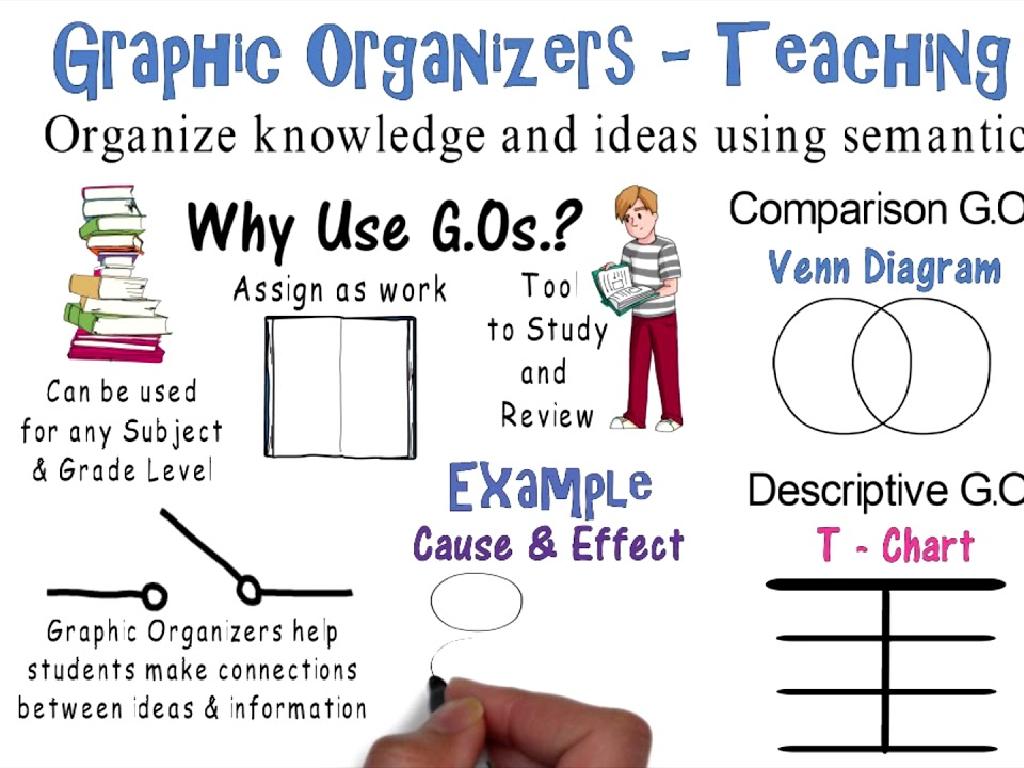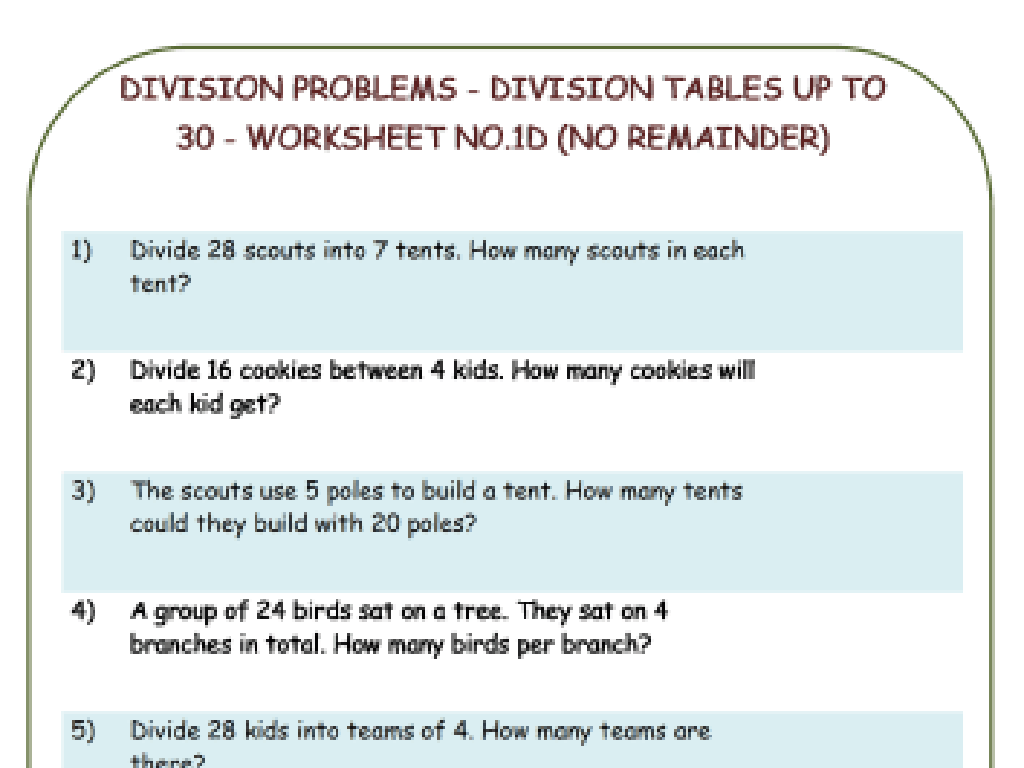Changes To Earth'S Surface: Volcanic Eruptions
Subject: Science
Grade: Third grade
Topic: Earth Events
Please LOG IN to download the presentation. Access is available to registered users only.
View More Content
Earth’s Dynamic Changes: Volcanic Eruptions
– Earth is always changing
– Volcanoes shape our planet
– Mountains and islands can form from eruptions
– How eruptions change the land
– Lava flows and ash can reshape landscapes
– Volcanoes create new land
– Islands like Hawaii were formed by volcanoes
|
This slide introduces the concept of Earth’s ever-changing surface with a focus on volcanic eruptions. Begin by explaining that Earth is dynamic, meaning it’s always in motion and changing. Discuss how volcanoes are a powerful force that can create and reshape the Earth’s surface. Explain that when a volcano erupts, it can change the land by spewing out lava and ash, which can create mountains or fill in valleys. Highlight that some places on Earth, like the Hawaiian Islands, are the result of countless volcanic eruptions over millions of years. Encourage students to think of volcanoes not just as destructive forces but also as creators of new land and features on our planet.
What is a Volcano?
– Volcanoes: Earth’s natural wonders
– A volcano is a mountain that opens downward to a pool of molten rock
– Anatomy of a volcano explained
– Magma chamber is the pool of liquid rock, vent is the passage, crater is the opening
– Types of volcanoes: shield, composite, cinder cone
– Shield volcanoes are wide, composite are tall and layered, cinder cones are small and steep
– Volcanoes shape our planet
|
Begin with a simple definition of a volcano, ensuring students understand it as a geological formation. Explain the parts of a volcano: the magma chamber where molten rock is stored, the vent through which magma exits, and the crater at the top where eruptions occur. Discuss the three main types of volcanoes, using simple terms: shield volcanoes with gentle slopes, composite volcanoes with steeper profiles and layers from different eruptions, and cinder cone volcanoes which are smaller and have steep sides. Emphasize that volcanoes play a significant role in shaping Earth’s surface, creating new landforms and altering landscapes.
The Power of Eruptions
– What is a volcanic eruption?
– It’s when a volcano explodes and sends out lava and ash.
– Heat and pressure’s role
– Underground heat and pressure build up and cause an eruption.
– Eruption releases materials
– Volcanoes can throw out hot lava, ash, and gases.
– Lava, ash, and gases explained
– Lava is melted rock, ash is tiny pieces of rock, and gases are like air but can be harmful.
|
This slide introduces the concept of volcanic eruptions to third-grade students. Begin by explaining what a volcanic eruption is, using simple terms such as ‘explosion’ and ‘volcano’ to describe the event. Discuss how heat and pressure inside the Earth play a crucial role in causing an eruption. Highlight the materials released during an eruption, such as lava, ash, and gases, and ensure to explain each one in a way that’s understandable for young students. Lava can be described as melted rock that flows like thick, hot syrup, ash as small, dusty particles that can cover the sky, and gases as invisible but sometimes smelly air that can be dangerous. The goal is to provide a basic understanding of volcanic eruptions and their effects on Earth’s surface.
Volcanoes Around the World
– Historic volcanic eruptions
– E.g., Mount Vesuvius in 79 AD, destroyed Pompeii
– Where active volcanoes are
– E.g., Mount St. Helens in the USA, Mount Fuji in Japan
– Understanding the ‘Ring of Fire’
– An area in the Pacific with lots of earthquakes and volcanoes
– Volcanoes’ impact on Earth
|
This slide aims to introduce students to the concept of volcanoes on a global scale. Start by discussing some of the most famous volcanic eruptions in history, such as the eruption of Mount Vesuvius, which buried the city of Pompeii in ash. This will help students understand the power and significance of volcanic activity. Next, point out the locations of some well-known active volcanoes, like Mount St. Helens or Mount Fuji, to give them a sense of where volcanoes can be found around the world. Explain the ‘Ring of Fire’ as a major area in the Pacific Ocean where many earthquakes and volcanic eruptions occur, and why it’s important for scientists to monitor. Lastly, discuss how volcanoes can change Earth’s surface, not only through eruptions but also by creating new landforms and affecting climate. Encourage students to think about how living near a volcano might affect people’s lives.
Effects of Volcanic Eruptions on Earth
– Volcanoes reshape Earth’s surface
– Lava flows and ash can create new landforms
– Eruptions have good and bad effects
– Ash clouds can harm air quality, but also create rich soil
– Volcanic soil benefits farming
– Volcanic ash breaks down to make soil fertile for crops
– Safety measures during eruptions
|
This slide aims to educate third-grade students on the various effects of volcanic eruptions. Begin by explaining how eruptions can dramatically alter the landscape, creating mountains and valleys. Discuss both the positive and negative impacts, such as the creation of fertile soil versus the destruction of habitats. Emphasize the benefits of volcanic soil for agriculture, which is rich in minerals and helps farmers grow crops. Lastly, touch on the importance of safety and preparedness in areas prone to volcanic activity. Use simple language and examples to make the concepts relatable, and consider incorporating a hands-on activity like creating a clay volcano to demonstrate an eruption.
Safety and Volcanoes
– Staying safe during eruptions
– Follow safety tips like staying indoors and wearing masks
– The need for evacuation plans
– Evacuation plans help us leave danger zones quickly and safely
– Monitoring volcanoes
– Scientists use tools to watch volcanoes for any signs of eruption
– Predicting volcanic eruptions
– Knowing when a volcano may erupt helps us prepare and stay safe
|
This slide aims to educate third-grade students on the safety measures to take during volcanic eruptions. Emphasize the importance of following safety guidelines such as staying indoors, wearing masks to avoid inhaling ash, and listening to authorities. Discuss how having an evacuation plan is crucial for families living near volcanoes. Explain that scientists monitor volcanoes using various tools and signs like earthquakes and gas emissions to predict possible eruptions. This knowledge allows communities to be alerted in advance, ensuring everyone’s safety. Engage the students by asking if they know any active volcanoes and what they would do in case of an eruption.
Let’s Build a Volcano!
– Class activity: Build a model volcano
– Gather materials: baking soda, vinegar, etc.
– We’ll use household items to simulate a real volcano
– Learn about eruption with our model
– Mixing baking soda and vinegar causes a reaction like lava flow
– Observe and discuss the eruption
– Watch the ‘lava’ flow and think about how it changes the ‘earth’
|
This hands-on activity is designed to help students understand the eruption process of a volcano by creating a simple model using common materials. The teacher should prepare a safe space for the experiment, ensuring all students have a clear view. Provide each student or group with baking soda, vinegar, food coloring, and a container to act as the volcano. Guide them through the process of mixing the ingredients to simulate an eruption. Encourage students to observe the ‘lava’ flow and discuss how such an event can change the Earth’s surface. This activity will help solidify their understanding of volcanic eruptions in a fun and interactive way.
Volcano Eruption Simulation
– Observe model volcano eruptions
– Discuss baking soda-vinegar reaction
– Baking soda reacts with vinegar to produce gas, like magma in volcanoes.
– Relate simulation to real eruptions
– How does our model compare to a real volcano?
– Understand real-world volcano impact
– Volcanoes can change landscapes and affect climate.
|
This slide is for a class activity where students will observe a simulated volcanic eruption using model volcanoes. The activity involves a chemical reaction between baking soda and vinegar to mimic the eruption process. Discuss with the students how the gas produced in the reaction is similar to magma escaping from a real volcano. Relate the simulation to actual volcanic eruptions by explaining how pressure builds up and leads to an eruption. Highlight the effects of real eruptions on the Earth’s surface, such as creating new landforms and impacting the global climate. Encourage students to think critically about the differences and similarities between the model and real volcanoes. Possible activities include having different ‘volcanoes’ with varying amounts of baking soda and vinegar to show different eruption sizes, or using different materials to simulate lava flow.
Volcanoes: Earth’s Fiery Wonders
– Recap on volcano facts
– What are some cool things we learned?
– Parts of a volcano
– Identify the main parts like the magma chamber, vent, and crater.
– Eruptions alter landscapes
– Lava flows and ash can reshape the land.
– Questions to ponder
|
This slide aims to review the key points from the lesson on volcanoes. Start by asking the students what they remember about volcanoes, prompting them to recall interesting facts they’ve learned. Then, review the main parts of a volcano, ensuring they can identify and name the magma chamber, vent, and crater. Discuss how volcanic eruptions can dramatically change Earth’s surface, creating new landforms with lava and ash deposits. Encourage students to think critically by asking questions like ‘What would happen to the landscape if a volcano erupted here?’ This interactive review solidifies their understanding and prepares them for further exploration of Earth events.
Volcano Drawing Homework
– Congrats on being scientists!
– Homework: Draw a volcano
– Use your creativity and color
– Label each part of the volcano
– Include the magma chamber, vent, lava, ash cloud
– Show and tell next class
|
Today’s class was about understanding volcanic eruptions and their impact on Earth’s surface. For homework, students are tasked with drawing a volcano to reinforce their learning. Encourage them to include and label the main parts such as the magma chamber, vent, lava flow, and ash cloud. This activity will help solidify their understanding of the structure of a volcano. In the next class, be prepared to give each student a chance to present their drawing and explain the parts they’ve labeled. This will not only assess their comprehension but also boost their presentation skills.






